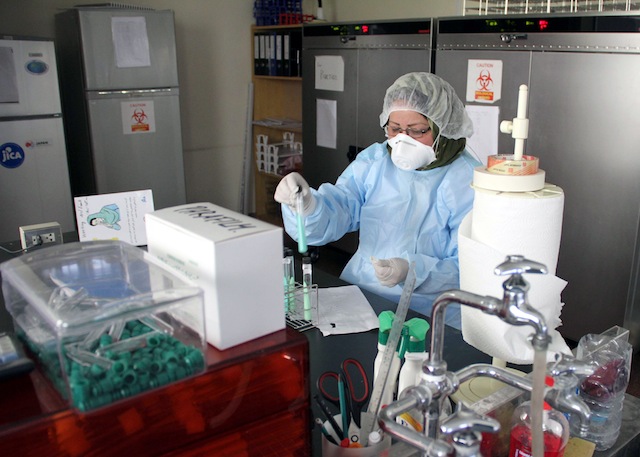SUMMARY
This is AI generated summarization, which may have errors. For context, always refer to the full article.

PARIS, France – One of the largest genetic investigations into the microbe which causes TB shows the germ followed early humans out of Africa at least 70,000 years ago, scientists said on Sunday, September 1.
In a parallel probe, investigators also said they had identified 39 new genes that drive dangerous drug resistance in this germ, Mycobacterium tuberculosis.
TB is one of the deadliest diseases in the medical lexicon.
Untreated, it kills roughly half the people it infects.
Even today, in the era of advanced antibiotics, it causes between a million and two million deaths each year, mainly in developing countries.
Drug designers are embroiled in an arms race with the germ, hoping to outflank it with new treatments before it develops resistance to existing ones.
Writing in the journal Nature Genetics, researchers led by Sebastien Gagneux of the Swiss Tropical and Public Health Institute compared the DNA of 259 TB strains from around the world.
They used this to build a “family tree” of the germ, using genetic mutations as a kind of molecular clock to show its pace of evolution.
The comparison shows that the bacterium originated in Africa over 70,000 years ago, coinciding with the migration of anatomically modern humans from their homeland.
Indeed, the family trees of Homo sapiens and M. tuberculosis overlap stunningly, which suggests early man and bug lived in close proximity, the researchers found.
“The evolutionary path of humans and the TB bacteria shows striking similarity,” said Gagneux. “We see that the diversity of tuberculosis bacteria has increased markedly when human populations expanded.”
TB’s spread was probably kickstarted when humans started to live in larger communities, enabling the germ to be transmitted more efficiently from person to person, the authors speculate.
The germ’s ancient history means the disease is unlikely to have jumped from domesticated animals to humans, as has been seen in so many other bacteria or viruses.
“[This is] simply because Mycobacteria tuberculosis emerged long before humans started to domesticate animals,” said Gagneux.
Genes in drug-resistant TB
In a separate study, also published in Nature Genetics, Harvard Medical School investigators found 39 new genes implicated in drug-resistant TB in a genomic comparison of 123 strains.
Researchers discovered that some of the genes play a role in regulating the bacterium’s cell walls — a common target for many antibiotics.
But it also turned up evidence that drug resistance is more complex than thought.
A conventional notion is that resistance occurs with a single mutation in a gene.
Instead, this change is likely to be part of a multi-step process that starts with low resistance and then builds up.
“Until now, people assumed that single mutations conferred high-level resistance — a strain either had them or did not — but our results challenge that paradigm,” said Megan Murray, a professor of global health and social medicine, in a press release.
“Knowing that small changes occur early in the evolution of resistance open the door for big changes, or that a single change is a gateway to global resistance, would be important clues in our struggle to outrace evolving drug resistance.” – Rappler.com
Add a comment
How does this make you feel?
There are no comments yet. Add your comment to start the conversation.